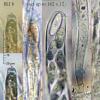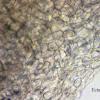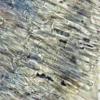
09-12-2025 12:06
 Andgelo Mombert
Andgelo Mombert
Bonjour,Je recherche l'article concernant Hypobryo

07-12-2025 16:07
Arnold BüschlenHallo, ich habe in einer Moos-Aufsammlung (epiphy

08-12-2025 21:04
Mark Stevens"Hello everyone,I'm relatively new to microscopy (

08-12-2025 18:59
 Lothar Krieglsteiner
Lothar Krieglsteiner
.. found by a seminar-participant, I do not know t

08-12-2025 17:37
 Lothar Krieglsteiner
Lothar Krieglsteiner
20.6.25, on branch of Abies infected and thickened

16-03-2014 22:00
Hello,I found this species a few months ago but ha

08-12-2025 13:39
Thomas Læssøehttps://svampe.databasen.org/observations/10572899
Hymenoscyphus cf. sazavae
Enrique Rubio,
28-09-2009 21:14
I’d like to know your opinion about this Hymenoscyphus (Phaeohelotium) species that grows on vegetable debris : roots and leaves of Betula alba in a very moist ground at 1300 m of altitude.
Puebla de Lillo (León) N of Spain, 27-IX-2009.
The apothecia are substipitate, yellowish, up to 2-3 mm of diam.
Enrique Rubio,
28-09-2009 21:16
Enrique Rubio,
28-09-2009 21:17
Enrique Rubio,
28-09-2009 21:19
Enrique Rubio,
28-09-2009 21:32
Re:Hymenoscyphus cf. sazavae
Zotto's keys go to me to . "Hel." ?sulphuratum (= H. sazavae ss. Baral).
Declercq's keys to “Hymenoscyphus” sazavae (Velen.) Svrcek ss. ?Baral in Weber(1992: 120)
= Helotium eichleri Bres. ss. Velen. (1934:197).
I have read on Velenovsky's work (Monog. Discom. Bohemiae) and Svrcek's recombination (Acta Musei Nationalis Pragae), the brief description and drawings of Helotium sazavae Velen. and Hymenoscyphus sazavae (Velen.) Svrcek, and it does not seem to be this species.
Zotto's CD show me some drawings of Hymenoscyphus 'parasazavae' that seems fits well with my own collection.
What do you think?
Many thanks again
Enrique
Declercq's keys to “Hymenoscyphus” sazavae (Velen.) Svrcek ss. ?Baral in Weber(1992: 120)
= Helotium eichleri Bres. ss. Velen. (1934:197).
I have read on Velenovsky's work (Monog. Discom. Bohemiae) and Svrcek's recombination (Acta Musei Nationalis Pragae), the brief description and drawings of Helotium sazavae Velen. and Hymenoscyphus sazavae (Velen.) Svrcek, and it does not seem to be this species.
Zotto's CD show me some drawings of Hymenoscyphus 'parasazavae' that seems fits well with my own collection.
What do you think?
Many thanks again
Enrique
Hans-Otto Baral,
28-09-2009 22:55

Re:Hymenoscyphus cf. sazavae
Hi Enrique
yes, that's it. I had this species a few days ago also here fresh, but with not many mature asci, from NE-Germany. You are fully right, H. sazavae is not conspecific, after my type revision it is what I call H. lutescens.
The present fungus is one of the many undescribed or at least unclarified. Presently I call it parasazavae but I don't like that name. typical is that the many medium small guttules in the spores are only medium or sometimes slightly refractive and disappear in KOH, unlike LBs. They can be stained with CRB, so they are vacuoles, but I did not succeed with that recently. If you still have it fresh you can test that, I think it could take 10 minutes until the stain goes in the spores.
The spores are always aseptate when inside living asci, and all of them get 1-septate in an overmature stage. So the percentage of 1-septate spores rapidly increases with senescence of the apothecium.
I just see the unusual substrate: Is there any coniferous debris among the Betula leaves? I never had this species on other than conifer substrate. First I thought your spores are wider than mine, but from your scale they are only 4.8-6 µm wide, so this is only a but wider thatn I evaluated in my finds: *(10.5-)12-17(-20) x (4-)4.3-5.2(-5.5) µm.
Here are my ecological data:
Over acid soil in 350-1060 m altitude, in brooks and ditches, at lakes of high moors, lying often half immersed in moist to mostly wet, muddy or sandy ground, usually some 10 cm above low water level, rarely submerged in water, on cones {16}, needles {6}, or on usually decorticated, eroded, c. 4-90 mm thick branches or roots {10}, of Abies alba {4}, Picea abies {19/2}, Pinus sp. {2}, indet. coniferous tree {1}, on 2-4 mm deep strongly darkened, medium (to strongly) decayed wood {8}, rarely bark {1}.
Zotto
yes, that's it. I had this species a few days ago also here fresh, but with not many mature asci, from NE-Germany. You are fully right, H. sazavae is not conspecific, after my type revision it is what I call H. lutescens.
The present fungus is one of the many undescribed or at least unclarified. Presently I call it parasazavae but I don't like that name. typical is that the many medium small guttules in the spores are only medium or sometimes slightly refractive and disappear in KOH, unlike LBs. They can be stained with CRB, so they are vacuoles, but I did not succeed with that recently. If you still have it fresh you can test that, I think it could take 10 minutes until the stain goes in the spores.
The spores are always aseptate when inside living asci, and all of them get 1-septate in an overmature stage. So the percentage of 1-septate spores rapidly increases with senescence of the apothecium.
I just see the unusual substrate: Is there any coniferous debris among the Betula leaves? I never had this species on other than conifer substrate. First I thought your spores are wider than mine, but from your scale they are only 4.8-6 µm wide, so this is only a but wider thatn I evaluated in my finds: *(10.5-)12-17(-20) x (4-)4.3-5.2(-5.5) µm.
Here are my ecological data:
Over acid soil in 350-1060 m altitude, in brooks and ditches, at lakes of high moors, lying often half immersed in moist to mostly wet, muddy or sandy ground, usually some 10 cm above low water level, rarely submerged in water, on cones {16}, needles {6}, or on usually decorticated, eroded, c. 4-90 mm thick branches or roots {10}, of Abies alba {4}, Picea abies {19/2}, Pinus sp. {2}, indet. coniferous tree {1}, on 2-4 mm deep strongly darkened, medium (to strongly) decayed wood {8}, rarely bark {1}.
Zotto
Nicolas VAN VOOREN,
28-09-2009 23:03

Re:Hymenoscyphus cf. sazavae
Hi Enrique.
I don't know your species but I'm sure that it isn't Hymenoscyphus sulphuratus in my interpretation (see Van Vooren & Cheype, 2008, in the attached PDF). You can find some informations about H. sazavae in the page 142... but I suppose that Zotto will also contribute to this post.
Best regards.
I don't know your species but I'm sure that it isn't Hymenoscyphus sulphuratus in my interpretation (see Van Vooren & Cheype, 2008, in the attached PDF). You can find some informations about H. sazavae in the page 142... but I suppose that Zotto will also contribute to this post.
Best regards.
Enrique Rubio,
29-09-2009 17:52
Re:Hymenoscyphus cf. sazavae
Many thanks Zotto and Nicolas.
This is a mixed forest with Betula, Fagus and Pinus sylvestris, but in the zone it was collected, only there is Betula alba. I can see the apothecia attached to a small roots and leaves of Betula in very moist ground.
I don't understand well a thing: Is H. lutescens my fungus? or is H. 'parasazavae'?.
Is H. sazavae = H. lutescens ss. Baral ?
Best regards
This is a mixed forest with Betula, Fagus and Pinus sylvestris, but in the zone it was collected, only there is Betula alba. I can see the apothecia attached to a small roots and leaves of Betula in very moist ground.
I don't understand well a thing: Is H. lutescens my fungus? or is H. 'parasazavae'?.
Is H. sazavae = H. lutescens ss. Baral ?
Best regards
Hans-Otto Baral,
29-09-2009 21:18

Re:Hymenoscyphus cf. sazavae
H. lutescens (Hedw.) Phill. as I interpret it (= H. sazavae), and I do not know another interpretation of the name (I think no type material exists), is a species with croziers and spores with LBs, not VBs. Also the paraphyses and excipular cells contain very striking VBs in lutescens, not so in parasazavae.
The only problem is that your spores are a bit wide, and the deviating substrate. On your macro I see a needle in the upper area, isn't it? Could you plese send me the images in higher resolution, perhaps I see this needle clearer.
Zotto
The only problem is that your spores are a bit wide, and the deviating substrate. On your macro I see a needle in the upper area, isn't it? Could you plese send me the images in higher resolution, perhaps I see this needle clearer.
Zotto
Enrique Rubio,
30-09-2009 16:59
Re:Hymenoscyphus cf. sazavae
It is possible that the wind has dragged some needle of pine, but I can see the ascomata attached to a small roots and Betula alba leaves.
I will send you my images at higher resolution
I will send you my images at higher resolution
Hans-Otto Baral,
30-09-2009 20:30

Re:Hymenoscyphus cf. sazavae
Hi Enrique
thanks for the images. I actually feel to see a lot of Pine needles among the leaf veins and lamina. So i think the fungus is here not surely on a angiosperm substrate.
Zotto
thanks for the images. I actually feel to see a lot of Pine needles among the leaf veins and lamina. So i think the fungus is here not surely on a angiosperm substrate.
Zotto







 9120.pdf
9120.pdf